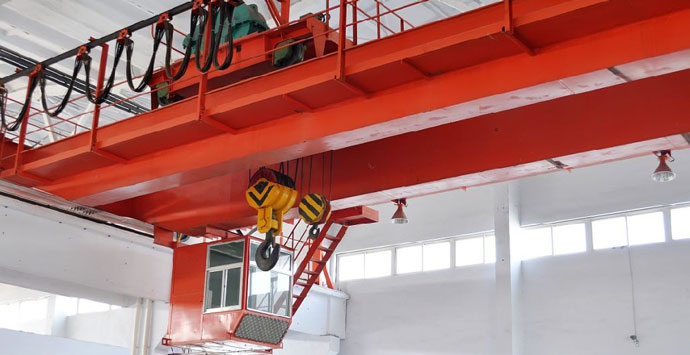Как остановить качание крана?
2025-06-04
Нагрузка на качающуюся крана - это не просто раздражение - это серьезная угроза безопасности и крупный убийца производительности. Неконтролируемое скачок может повредить материалы, компромисс структурной целостности, Необщающийся персонал, и вызвать дорогостоящие задержки. Хорошие новости? Crane Swing очень управляется с правильными методами и инструментами. Вот как остановить танцевать эту нагрузку:

Понимание врага: Почему нагрузки качаются
Прежде чем заниматься решениями, знать причины:
-
Внезапные движения: Грузовая начинается, останавливается, подъем, опускание, или шери (вращение кран).
-
Ветер: Порывы, толкающие нагрузку или бум.
-
Ошибка оператора: Неопытность, устремляется, или плохое суждение.
-
Длинные бум/длинные веревки: Чем дольше маятник (бум + подъемные веревки + нагрузка), Чем более выражен.
-
Неровное заземление: Установка нагрузки неравномерно может вызвать качели при снова подъеме.

Ключевые стратегии, чтобы остановить качание нагрузки крана:
-
Овладеть «мягким стартом» и «Мягкая остановка»: Это техника оператора 101.
- Подъем/опускание: Ускорить и замедлять подъемник постепенно. Представьте себе, что вы убираете свою машину от стоп -сигнала, не топать на газ. То же самое относится и к остановке спуска или подъема.
- Стало (Покачивая кран): Начинать вращение медленно и заканчивать его плавно. Избегайте разбивания стрелы вокруг. Планируйте свой путь свинга, чтобы минимизировать ненужное движение. Замедлить, прежде чем достичь целевого положения, позволяя нагрузке успокоиться.
-
Идеально «мягкая нагрузка» и «мягкая земля»:
- Поднимаясь: Убедитесь, что строки замужем, но не дергают нагрузку. Поднимайте медленно и неуклонно, пока нагрузка не будет полностью очищена от земли или препятствий.
- Установка: Мягко опустите нагрузку и полностью ослабьте стропы, прежде чем отказаться. Не «падай» последние несколько дюймов. Установка одного угла сначала часто вызывает качели.
-
Используйте слоган (Нагрузка): Это один из самых простых и эффективных ручных элементов управления.
- Работник (Оператор слогана), безопасно расположен за пределами зоны потенциального падения, а не под нагрузкой, использует веревку, прикрепленную к нагрузке.
- Они применяют нежны, контролируемое натяжение для направления нагрузки, противодействовать качанию, и позиционировать это точно во время последнего размещения.
- Ключевой: Четкое общение (Ручные сигналы или радиоприемники) между оператором крана и оператором слогана жизненно важна. Оператор слогана должен быть обучен и осведомлен о точках зажимывания.
-
Использование технологии: Анти-сильные системы:
- Подвесные контролируемые системы: Некоторые краны позволяют операторам вручную выполнять функцию анти-силой через подвесной контроль, который рассчитывает и применяет контр-движения.
- Полностью автоматизированные системы антиснабжения: Эти сложные системы используют датчики (Как инерционные измерительные единицы - Imus) на крючок и блок или нагрузка.
- Они непрерывно измеряют качание нагрузки (угол и скорость).
- Система управления краном автоматически вычисляет и выполняет точные движения стрелы и подъема, чтобы противодействовать качанию, эффективно демпфируя его.
- Преимущества: Значительно уменьшает рабочую нагрузку оператора, улучшает точность, повышает безопасность, и ускоряет операции, особенно с длинными бумами или в ветреных условиях.
-
Уважайте ветер:
- Мониторинг условий: Постоянно помните о скорости и направлении ветра. Знайте рейтированные ограничения ветра и остановки крана, если они превышены.
- Управление ветром: При подъеме большого, свет, или парусные грузы (НАПРИМЕР., панели, фермы), Ожидайте значительного воздействия ветра. Усердно используйте слоганы. Поместите нагрузку, чтобы ветер толкал его к месту назначения, когда это возможно во время качания. Поднимать нагрузки ближе к земле, где скорость ветра часто ниже.
-
Умение и суждение оператора: Самый важный фактор.
- Обучение: Всесторонний, Продолжающаяся обучение динамике нагрузки и методам управления не подлежит обсуждению.
- Планирование: Перед подъемом, спланировать весь путь. Определить препятствия, Точки очистки, И оптимальный маршрут свинга. Ожидайте, как будет вести себя нагрузку.
- Терпение: Стремительно вызывает резкие движения. Гладкий, преднамеренные действия в долгосрочной перспективе быстрее, потому что они предотвращают качание и повторное положение.
- Коммуникация: Сохранить ясно, Постоянная связь с людьми, Riggers, и наземный персонал.
Остановка качания крана не о грубой силе; Это о изящном, ожидание, и использование правильных инструментов. Освоив гладкие методы работы, Последовательно используя слоганы, Использование доступной технологии антиснабжения, Уважение факторов окружающей среды, таких как ветер, и приоритет квалифицированной операции, Вы превращаете потенциально опасный маятник в точно контролируемый инструмент.
Внедрение этих стратегий неизменно значительно повышает безопасность рабочих мест, защищает ценные материалы и конструкции, повышает производительность, и гарантирует, что ваши операции с краном работают гладко и эффективно. Помнить: Все еще нагрузка - безопасная и продуктивная нагрузка.




Последние комментарии